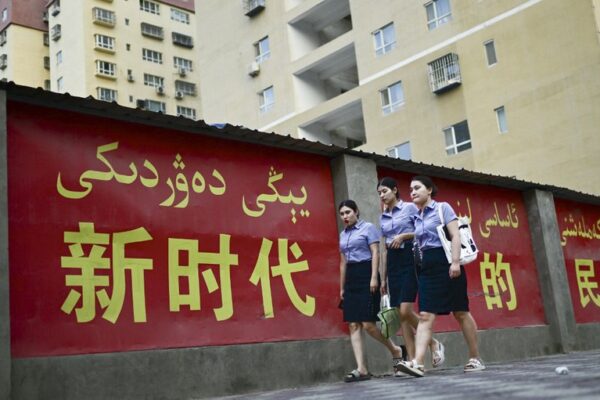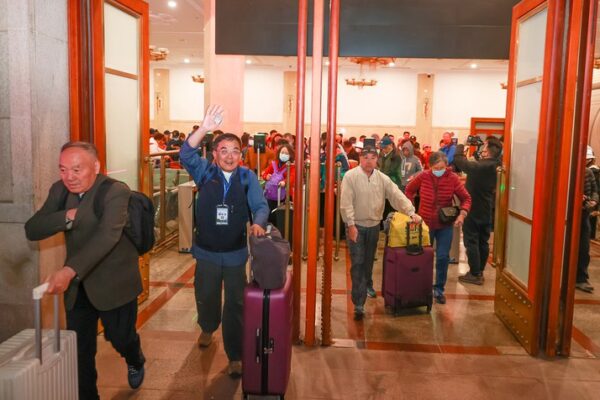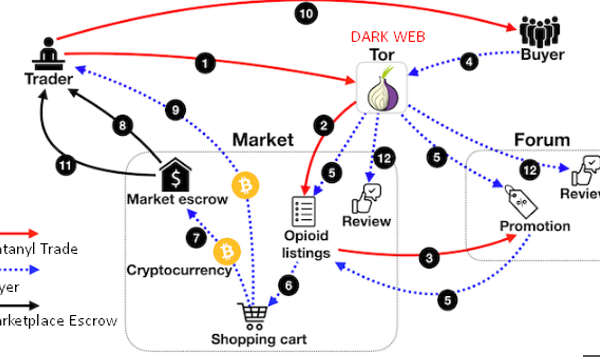‘People’s court’ issues arrest warrant for Xi Jinping
A citizens’ tribunal has issued a symbolic arrest warrant for Chinese President Xi Jinping after issuing a nonbinding verdict that he committed crimes of aggression against Taiwan, crimes against humanity in Tibet, and genocide against Uyghurs in Xinjiang. The Court of the Citizens of the World — a “people’s court” dedicated to universal human rights and based in The Hague, the Netherlands — issued the arrest warrant on July 12 after four days of hearings, which included expert witness testimonies and victim accounts. Members of the China Tribunal included Stephen Rapp, former U.S. ambassador-at-large for war crimes issues; Zak Yacoob, a retired judge who served on the Constitutional Court of South Africa; and Bhavani Fonseka, constitutional lawyer and human rights lawyer and activist in Sri Lanka. RELATED STORIES Uyghurs mark 2 years since ‘genocide’ finding Uyghur Tribunal finds China committed genocide in Xinjiang Uyghur Tribunal wraps up in London with eye on December ruling on genocide allegations Uyghur Tribunal determination could change paradigm for China relations: experts Experts and witnesses detailed widespread human rights abuses in Tibet and Xinjiang, including intrusive surveillance, repression, torture and restrictions on free expression and movement, as well as what they described as efforts to eradicate their distinct cultural and religious identities. Some witnesses were survivors of mass detention camps in Xinjiang, where torture and the forced sterilization of Uyghur women occurred. Though the unofficial body has no legal powers, its proceedings highlighted the plight of aggrieved parties and provided a model for prosecution in international or national courts under the principle of universal jurisdiction. The court said it “obtained sufficient legal grounds” for Xi’s arrest on the charges laid out against him and called on the international community to support its decision, though it is unclear how governments will react. Judge Zak Yacoob (L) speaks with presiding judge Stephen Rapp during the China Tribunal at the Court of the Citizens of the World, in The Hague, the Netherlands, July 12, 2024. (Court of the Citizens of the World via YouTube) “The tribunal’s core findings are of significant importance, revealing the extent of human rights abuses committed by the Chinese state,” said a report by JURIST, a nonprofit news organization that highlights rule-of-law issues around the world. There was no immediate response from the Chinese government. Former prisoners speak Former Tibetan political prisoners, including Dhondup Wangchen and Tenpa Dhargye, recounted the torture they experienced in Chinese jails and the impact of China’s repressive policies in Tibet. Tibetan filmmaker and human rights activist Jigme Gyatso, also known as Golog Jigme, who has been jailed by Chinese authorities on at least three occasions, highlighted Xi Jinping’s efforts to completely eradicate the use of Tibetan language and culture. He also outlined what he said was the systematic torture and persecution of political prisoners after their release and the coercive control of Tibetans’ movements in greater Tibet. Gulbahar Haitiwaji, a Uyghur former internment camp detainee who now lives in France, testified before the tribunal about being chained to beds and tortured in Xinjiang. She told Radio Free Asia that she felt immense excitement when called upon to testify, seeing it as a crucial opportunity to speak for the hundreds of thousands of Uyghurs who endured China’s concentration camps. “Back then, while in the camp, I often wondered if there was any justice in the world capable of punishing those responsible for our people’s suffering,” she said. The Chinese government tried to dissuade some Uyghurs from providing testimony in The Hague. Abdurehim Gheni, a Uyghur activist who now lives in the Netherlands, said Chinese police contacted him via Telegram, a WeChat-style communication app banned in China, as recently as two days before he was scheduled to appear before the court. The police also had his brother leave voice messages telling him not to attend the hearing, he said. Judges Bhavani Fonseka (L) and Zak Yacoob (C) and presiding judge Stephen Rapp hold court during the China Tribunal at the Court of the Citizens of the World in The Hague, the Netherlands, July 12, 2024. (Court of the Citizens of the World via YouTube) Gheni recounted that his brother said: “Do not do anything against the government. If you return here, the government will be lenient on you. We can also go there to see you.” The tribunal reported that it faced attempts to shut it down in the form of a phony cease-and-desist order, and said a spy disguised as a legal volunteer provoked staff and other volunteers to resign, JURIST reported. ‘First meaningful step’ Abduweli Ayup, a Uyghur rights activist and researcher based in Norway, who also testified at the China Tribunal, said the verdict holds significant importance for Uyghurs. “It’s the first meaningful step to stop the Uyghur genocide,” he said. “The court has completed the accusation against the perpetrator and judged at the trial. The verdict implicates the criminal, Xi Jinping. He should be arrested and punished,” he said. In December 2021, an independent, nonbinding Uyghur Tribunal in London found that China committed genocide against Uyghurs in Xinjiang and that Xi Jinping shared primary responsibility for the atrocities. Though the panel had no state backing or power to sanction China, its conclusion added to the growing body of evidence at the time that Beijing’s persecution of Uyghurs constituted a crime against humanity that deserved an international response. In February 2023, the Court of the Citizens of the World issued an indictment against Russian President Vladimir Putin for the crime of aggression in Ukraine and called for his arrest. A month later, the International Criminal Court issued an arrest warrant for Putin along with Maria Lvova-Belova, Russia’s commissioner for children’s rights, for alleged war crimes involving accusations that Russia had forcibly taken Ukrainian children. Additional reporting by RFA Mandarin. Translated by RFA Uyghur and RFA Tibetan. Edited by Roseanne Gerin and Joshua Lipes.






